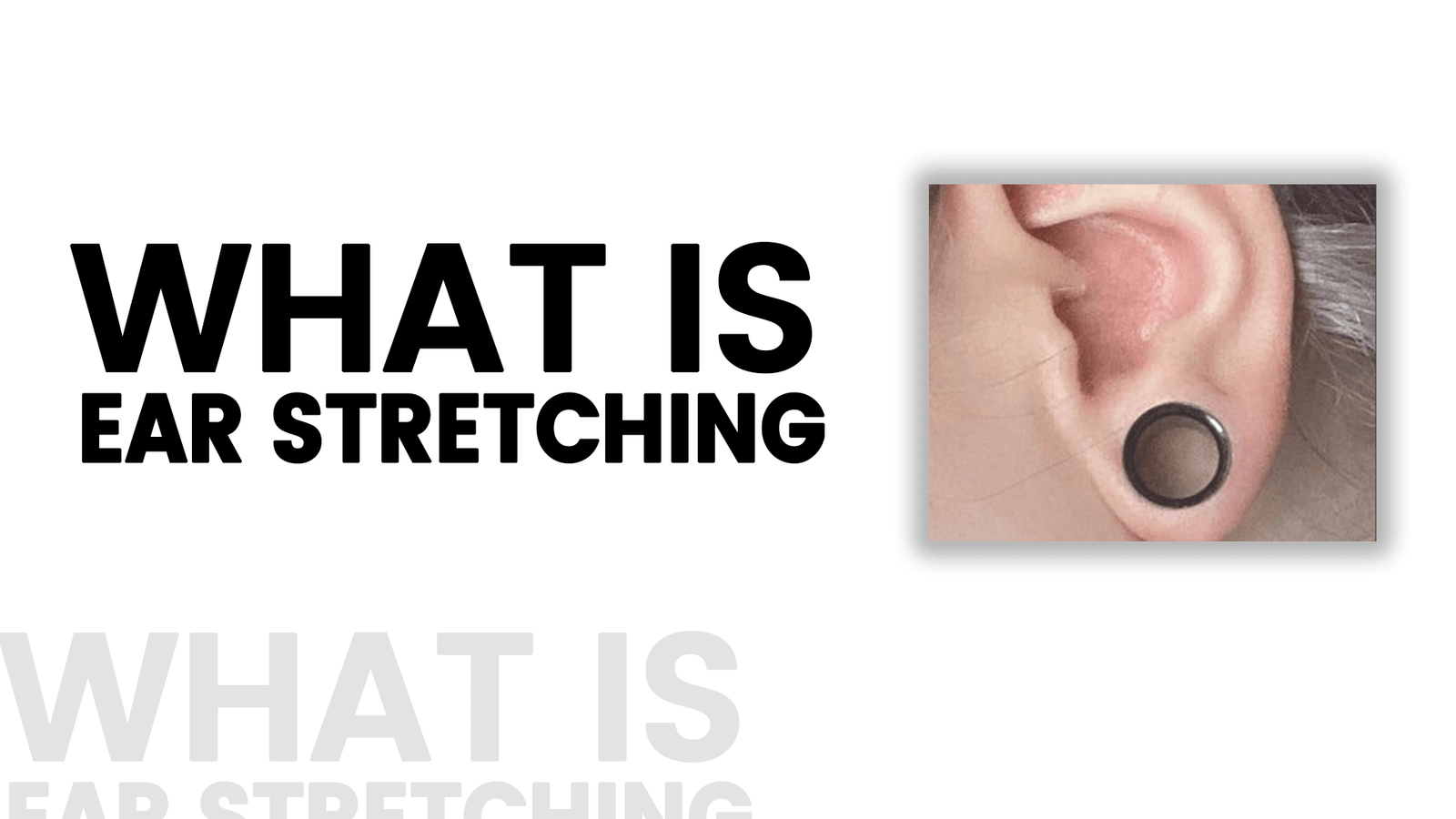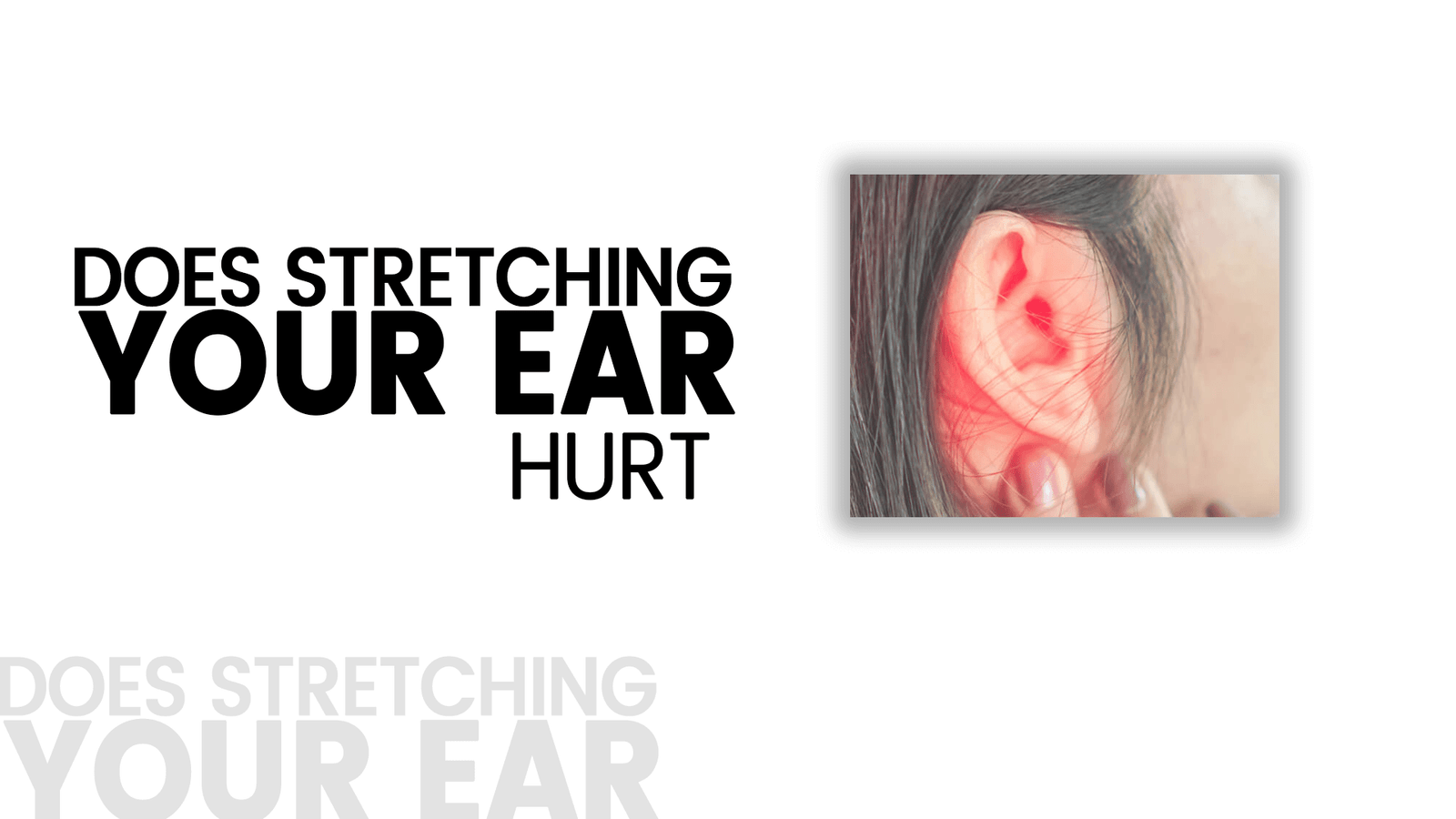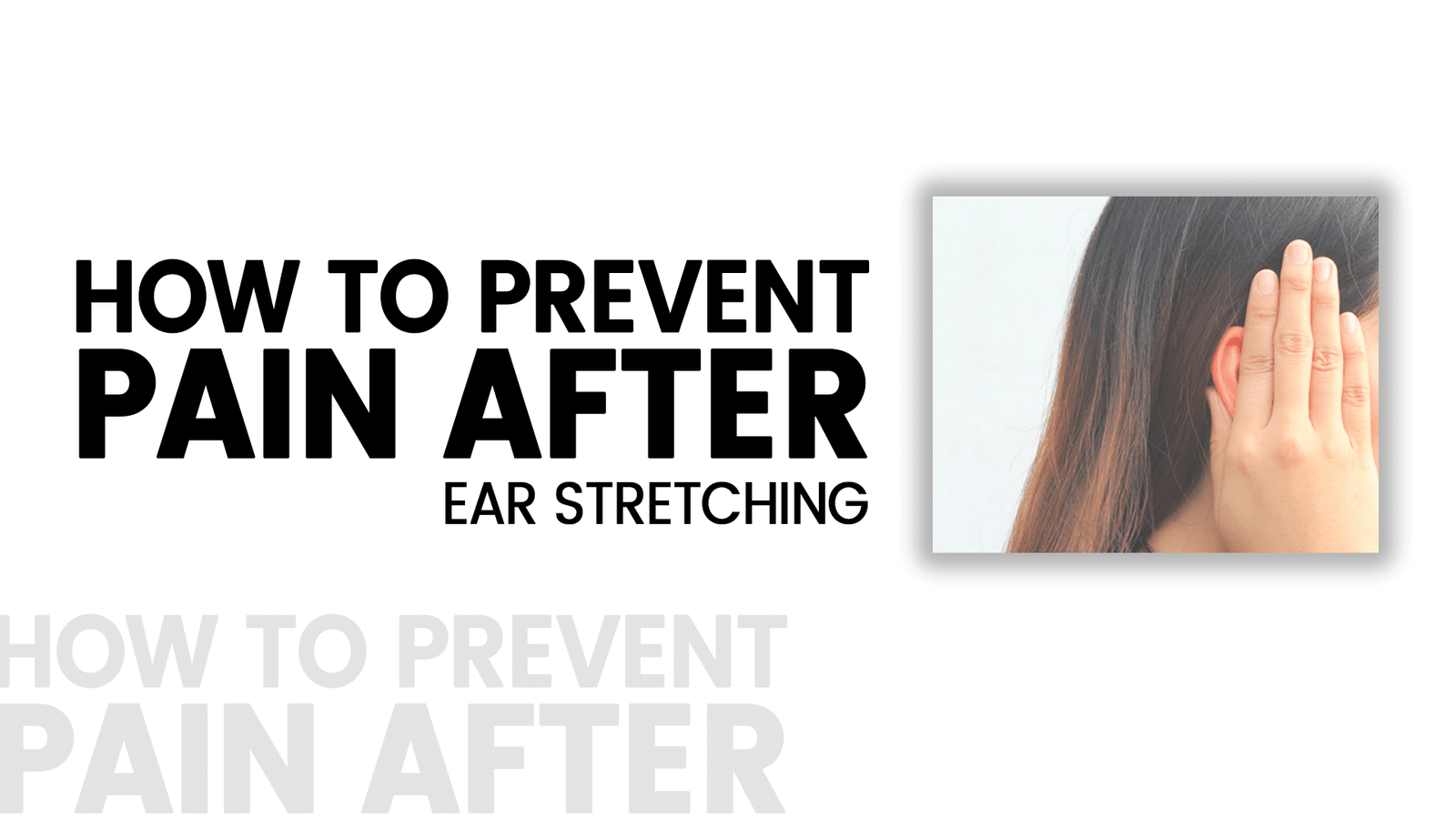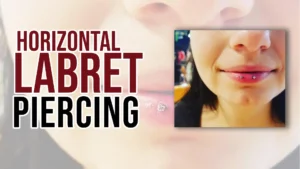Overview
Although many people find stretching and the aesthetic outcome enjoyable, it is not unusual for people to feel pain or discomfort during or after stretching. It is widespread for earlobes to feel pain after stretching, which can be concerning. After stretching, earlobes may hurt for various reasons, such as using the wrong technique or stretching too quickly, having an allergy or infection, or just going through the normal healing process. It’s crucial to care for stretched earlobes properly and, if required, seek medical help to reduce pain and suffering. In this article, we’ll look at some of the typical causes of ear pain after stretching and remedies for relieving pain and hastening recovery.
What is ear stretching?

A sort of body alteration called ear stretching, also known as ear gauging or earlobe stretching, is progressively expanding the size of the hole in the earlobe. Successively larger plugs or tunnels are inserted into the hole to do this. Depending on the person’s particular healing time and level of comfort, ear stretching often entails starting with a small gauge size and gradually lengthening the piercing over several weeks or months. A plug or tunnel is inserted after the earlobe has stretched to the desired size and can be customized with different designs and materials.
Many cultures throughout history have engaged in the popular form of body modification known as ear stretching. It is crucial to remember that extending the ears should be done gently and cautiously to prevent damage or tearing of the earlobe. To avoid infections or other problems, it’s also crucial to maintain good hygiene and take care of the stretched piercing.
Does stretching your ears hurt?

If you expand your ears properly, it shouldn’t hurt. Although you might experience a slight sting, the pain shouldn’t ever be so severe that it lasts for days. If they do, you are using a gauge size that is too large. It would help if you used a spike or a taper to enlarge the hole gently. The simplest method to ensure that you minimize the chance of any damage is only to go one gauge size up. The taper can be pushed into the ear more quickly using something like Vaseline. Then, to ensure a full recovery, you should leave that size gauge in your ear for at least six weeks. If you still want the hole to be more significant after that period has passed, move the gauge up. Even though the process takes a while, once you are pain and infection-free, you will be grateful.
Can Stretching your Ear Damage it?
Stretching your ear has the potential to harm it. Stretching has the potential to damage the lobes of your ears. There is a reason why the procedure could take a while and why you should take your time with it. You must be careful about the size you are attempting to expand to because the ear lobe does not simply stretch indefinitely. You can experience a blowout if the gauge is too large compared to your home or if you stretch the region quickly. The extended lobe area turns exceptionally red, raw, and irritable at this point. It might even feel quite uncomfortable for you to have lumps there and feel quite itchy and sore.
Reasons for Discomfort after Ear Stretching
Following are the reasons that can hurt your ears after stretching:
- Excessive stretching or incorrect technique
- Stretching that causes tearing or injury to the earlobe
- Jewelry or aftercare products causing infection or an allergic reaction
- Dryness or irritability brought on by improper post-treatment
- Excessive or forceful stretching that causes nerve injury or discomfort
- Body rejecting the jewelry Formation of scar tissue around the stretched piercing
- Headaches or migraines caused by pressure or strain as a result of heavier jewelry
- Blood supply to the extended region is momentarily limited while it heals.
Stretched Ear Blowout
When the ear is overstretched and gets irritated, a blowout occurs. This typically occurs if the gauge is forced into the hole, even though it is too large for the hole. Additionally, it might happen if the stretching proceeds slowly. The stretched ear’s inner circle may be reddened and swollen and be quite itchy. This could develop into an infection. The inability of the ear to heal appropriately leads to a blowout. Skin cannot regenerate new cells to accommodate the alteration. Microtears might be there instead. It gets painful and extremely inflamed because it cannot heal.
How to Prevent Pain after Ear Stretching?

Many customary aftercare procedures for calming your ears are part of treating your blowouts.
- To properly heal and ease the strain on your ear after a blowout, you should size down by two or three sizes.
- Another remedy involves soaking your sensitive ear lobe in a 1/8 to 1/4 teaspoon of non-iodized sea salt solution and 1 cup of warm distilled or bottled water two to three times daily.
- Rub alcohol and hydrogen peroxide should not be used to clean your ears since they can dry up them. Before lubricating your instruments, only use alcohol to sterilize them.
- Additionally, waiting a week or two for your blown-out ear to heal would be best before moving on to the next step, regular massaging.
- After removing the plugs, massage your extended ear for five to ten minutes each night with your preferred lubricant, ideally vitamin E oil, whether it’s healthy for maintenance or blown out for therapy. Massage aims to remove any scar tissue that results from extending the ears.
- After lubricating your ears, we advise you to “tuck the blowouts” or put the plugs back in from the back of your ear rather than the front.
- Lastly, always wait four to six weeks before upgrading sizes.
Conclusion
Finally, stretching your ears can be a fun and attractive way to modify your body. Although it is not unusual for people to feel pain or discomfort during or after stretching, it does happen. Technique, hygiene, and aftercare can reduce difficulties and encourage healing. To rule out any potential infections or other consequences, it is crucial to seek medical assistance if you experience substantial pain or discomfort. You can safely and effectively stretch your ears while lowering the possibility of pain or discomfort by adhering to these instructions and paying attention to your body’s sensations.
Learn from Ear Stretching Guide.





